
Dear Friends,
Presenting chest radiographs of an 80-year-old man. Images were taken 24 hours after embolisation of hepatic metastases. What do you see?
Check the images below, leave your thoughts in the comments section and come back on Friday for the answer.
Read more…
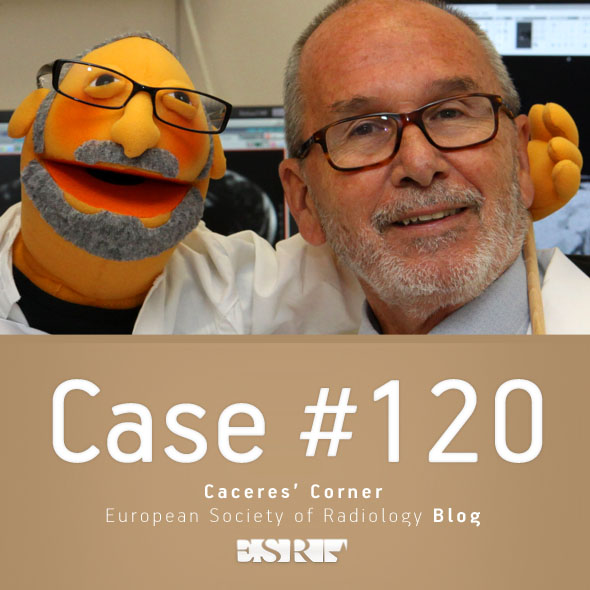
Dear Friends,
Today I am presenting chest radiographs of a 60-year-old man with vague chest complaints and mild cough.
What do you see in the images below? Leave your thoughts in the comments section and come back on Friday for the answer.
Read more…

Recent studies have raised the problem of dose optimisation imaging protocols in patients with renal colic. Some of them are written by emergency physicians, who seem to pay more attention to this problem than radiologists. We would like to hear what you think about this issue in the comments section below.
Renal colic is a common problem, which is increasing in incidence, affects 10%-15% of people over during their lives, and has a tendency to recur. The ability to rapidly identify kidney stones, as well as their position along the ureter and their dimensions, with high sensitivity and specificity using unenhanced CT, has made this technique the first-line approach to the condition. Since CT involves ionising radiation and there is growing concern about its possible carcinogenic effects, low-dose CT protocols for urolithiasis have been developed to minimise radiation risk.
However, low-dose images and often considered as low-quality images and, although these protocols have been shown to be accurate for stone detection, there are concerns about their use due to fears of missing other diagnoses that may clinically mimic stone disease, such as appendicitis, diverticulitis, and cholecystitis. A possible solution could be to use different CT protocols according to the pre-test probability of stone disease. In patients with a previous history of urolithiasis, a low-dose CT examination would be sufficient.
Read more…
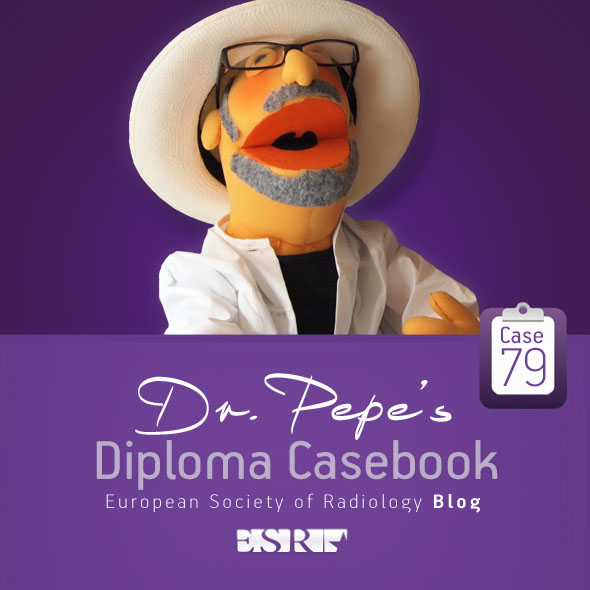
Dear Friends,
I would like to start the fourth season with an easy case. Showing pre-op radiographs for facial surgery of a 31-year-old woman. Check the images below, leave me your thoughts in the comments section, and come back on Friday for the answer.
Diagnosis:
1. Carcinoma of the lung
2. Subpulmonary fluid
3. Aspiration pneumonia
4. None of the above
Read more…
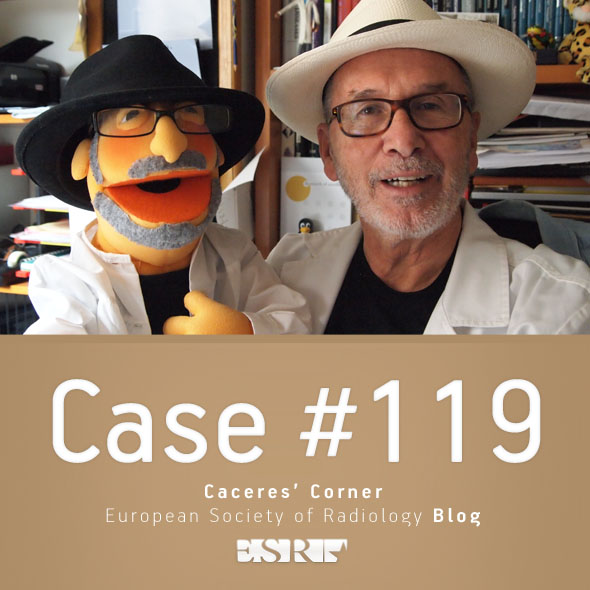
Dear Friends,
Welcome back to your favourite corner! Starting with a warm-up case: pre-op radiograph prior to biopsy of a vocal cord nodule in a 57-year-old woman with hoarseness. Including a radiograph of the shoulder taken eight months earlier in which part of the left lung is seen.
Check the images below, leave your thoughts in the comments section, and come back on Friday for the answer.
Diagnosis:
1. Widespread adenocarcinoma
2. TB
3. Sarcoidosis
4. None of the above
Read more…

For this month’s ESR News interview, we spoke to Prof. Laura Oleaga, from Barcelona, Spain, who serves on the ESR Executive Council as chair of the ESR Education Committee. She gave us an insight into the workings and recent achievements of her committee, as well as her own background within the ESR.
ESR News: What is the overall purpose of the ESR Education Committee and how does it operate?
Prof. Laura Oleaga: The purpose of the ESR Education Committee and its subcommittees is to promote education in radiology to achieve homogeneity in radiology education throughout Europe. To achieve this, the committee acts as a consultative body for all educational activities within the ESR and works closely with the European School of Radiology (ESOR), the European Board of Radiology (EBR), which organises the European Diploma in Radiology (EDiR), and the ESR’s e-Learning platform. The main objective of the committee is to achieve maximum quality in radiology training across Europe.

Prof. Laura Oleaga, chair of the ESR Education Committee
ESR: The committee interacts with a number of other groups and subcommittees. What roles do the European Training Assessment Programme Subcommittee (ETAP) and the Undergraduate Education Subcommittee play?
LO: Following the aim of harmonising the standards of radiology training in Europe, ETAP gives radiological institutions the opportunity to have their training programmes objectively assessed by external assessors nominated by the ESR, to guide their training in radiology according to the standards of the ESR European Training Curriculum for Radiology (ETC).
Moreover, it is important to promote the specialty of radiology in universities. In this regard the ESR Undergraduate Education Subcommittee is responsible for all activities aimed at the promotion of radiological education among medical students. The subcommittee has developed the paper Becoming a radiologist and is currently working on a guidance paper for all those interested or engaged in teaching radiology to medical undergraduates.
Read more…

To select the right treatment at the right time for your patient is a common slogan used to describe personalised medicine (PM): a new vision of healthcare which is already becoming a reality today. Different “omics” approaches such as genomics, proteomics or metabolomics allow patients’ predispositions to certain diseases or treatment response to specific medication to be predicted.
What is the role of radiology and radiologists in PM?
In the recent white paper, published by the ESR Working Group on Personalised Medicine (Insights Imaging (2015) 6:141–155), the authors emphasise the key roles medical imaging plays in PM. The authors clearly specify all areas and give examples of the unique and personalised information provided with medical imaging technologies.
In a substantial number of diseases, the first step leading from clinical symptoms to a diagnosis relies on imaging. Imaging has played this role for decades: assessing the location and extent of a disease in individual patients and characterising structural abnormalities and physiological environment, thus providing crucial information for the choice of the right treatment.
Read more…

For this month’s ESR News interview, we spoke to Prof. Michael Fuchsjäger, from Graz, Austria, who serves on the ESR Executive Council as chair of the ESR Finance & Internal Affairs Committee. He gave us an insight into the workings and recent achievements of his committee, as well as his own background within the ESR.
ESR Office: What is the overall purpose of the ESR FIA Committee and how does it operate?
Prof. Michael Fuchsjäger: The Finance and Internal Affairs Committee is responsible for monitoring the ESR’s investments and preparing the society’s annual budget. It presents regular updates to the Executive Council for discussion and final approval. To set a good example and save both time and resources, most of the committee’s meetings are held as part of the Executive Council meetings rather than on separate occasions. Aside from budgetary questions, the committee is also responsible for membership issues. The ESR reached a record of 60,000 members in June last year, finally peaking at 62,934 individual members from 156 countries. Despite this huge number, which makes the ESR the world’s biggest radiological society, the ESR attaches great importance to maintaining a high professional standard of its member community. The FIA Committee receives reports from the ESR Office’s Membership Department at regular intervals, which is part of the mechanism to ensure that the application criteria for the various membership categories are met. Membership subscription for 2015 is still open until August 27, 2015. Before this deadline, there will be increased promotion especially among those who have not yet seized the opportunity to benefit from the numerous related benefits. I invite all of you to visit the ESR website for more information.
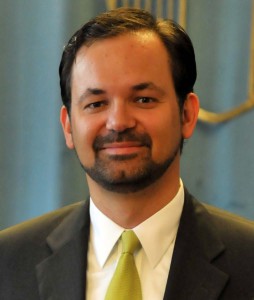
Prof. Michael Fuchsjäger, chair of the ESR Finance & Internal Affairs Committee
ESR: What are the main issues currently on the committee’s agenda, and how are they being tackled?
MF: The ESR’s budget is constantly monitored with the ultimate goal of achieving the best possible efficiency for the benefit of the society’s members. Each project proposed by any of the ESR’s numerous committees, subcommittees and other entities has an impact on the budget. When evaluating potential new activities in terms of cost efficiency, the ESR focuses on meeting the demands of its membership and the radiological scientific community. The evaluation is of course a constant process and continues for all established activities. The ESR committees and their sub-entities are structured in such a way as to create and permanently monitor synergies, for example by cross-representation of their members. The committee chairs, who attend all meetings of their sub-entities and coordinate their activities, regularly report to the Executive Council. This allows for quick decision making processes, also in terms of potential budgetary implications.
Read more…
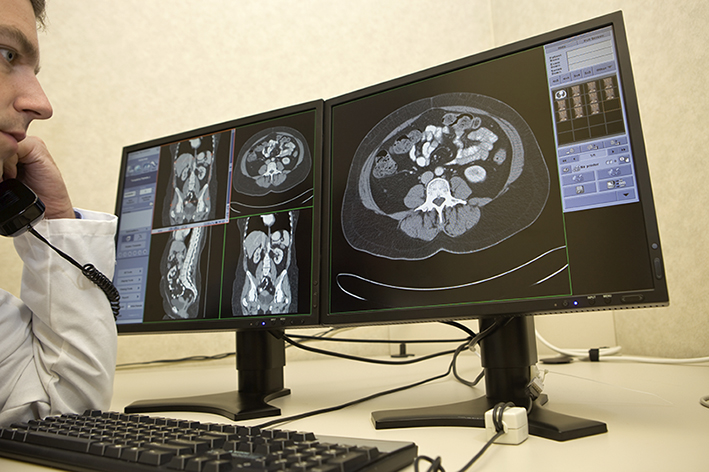
Survey results show that the radiologist’s availability to clinical colleagues is an important part of the imaging service. So how do you balance that availability and your regular workflow? We want to hear your thoughts below.
In 2011, Lindsay et al. published the results of a survey aimed at assessing what factors affected satisfaction with radiology services amongst referring clinicians (1). The survey was conducted shortly after implementation of a PACS system across three hospitals, and focused mainly on the changes created by improved communication between radiology and other hospital departments. Overall, respondents had a positive opinion of the impact of PACS installation, with the majority feeling it decreased the reporting times and ameliorated the working pattern for medical staff. Furthermore, there were a number of indicators showing that direct access to the radiological images did not decrease the importance of the radiology reports. On the contrary, the higher the experience of the referring clinicians, the higher the perceived value of this part of the radiologists’ work.
Read more…
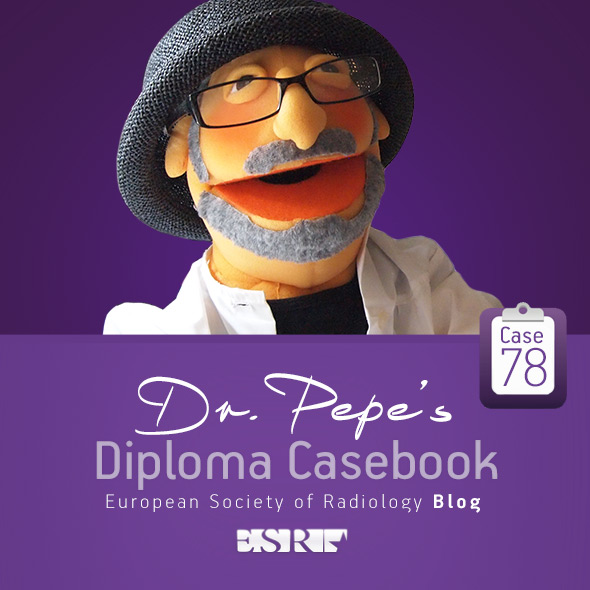
Dear Friends,
Today I’m showing a PA radiograph of a 49-year-old man with cough. Check out the image below, leave your thoughts and diagnosis in the comments section and come back on Friday for the answer.
Diagnosis:
1. Mediastinal lesion
2. Pulmonary lesion
3. Both
4. Can’t tell
Read more…










